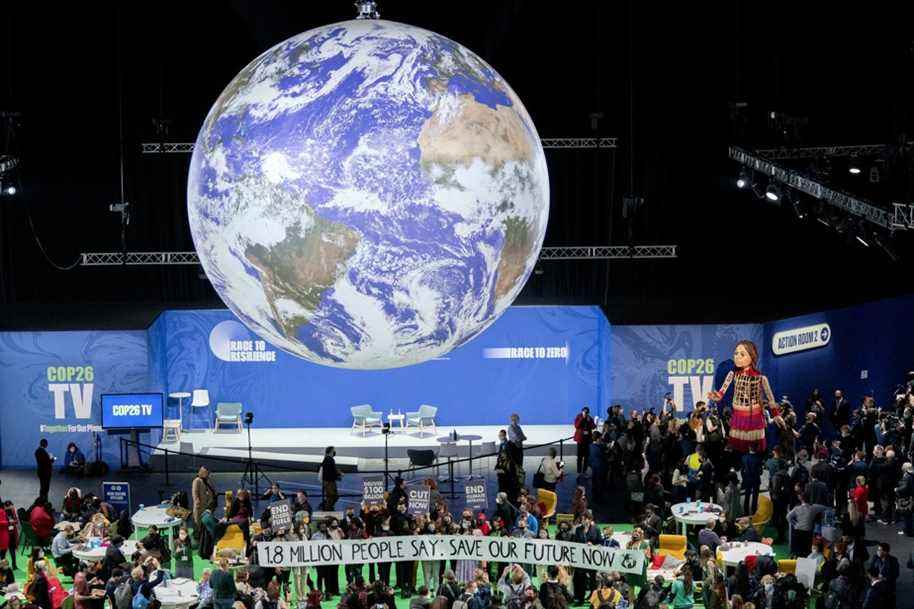(Glasgow) The brand new climate commitments by states have only marginally improved humanity’s chances of curbing global warming, the UN regretted on Tuesday, calling for even more ambition by the end of COP26 on the climate.
Just before and during the Glasgow climate conference which began on October 31, around thirty countries put new commitments on the table, in the short or long term, in particular Brazil and India, which made a commitment to carbon neutrality for 2070. Announcements that observers had often considered significant.
But “when you look at these new commitments, frankly, it’s the mountain that gave birth to a mouse,” said the boss of the United Nations Environment Program (UNEP) Inger Andersen on Tuesday.

PHOTO ALASTAIR GRANT, ASSOCIATED PRESS
“When we look at these new commitments, frankly, it is the mountain that gave birth to a mouse,” said the boss of the United Nations Environment Program (UNEP) Inger Andersen on Tuesday.
The UNEP annual baseline report released just before the start of COP26 predicted a “catastrophic” warming of + 2.7 ° C compared to the pre-industrial era. Or +2.2 ° C taking into account the promises of carbon neutrality for the middle of the century.
The forecast updated Tuesday by UNEP, which assesses the greenhouse gas emission reduction targets of some 150 states for 2030, are hardly a game-changer.
The commitments for 2030 of the last two weeks would represent 0.5 gigatons of CO equivalent2 fewer emissions in 2030, but we would have to add 27 ggigatonnes to this to limit warming to +1.5 ° C, the most ambitious objective of the Paris agreement.
As a result, the revised 2030 targets do not lead to any change in the temperature trajectory: + 2.7 ° C by the end of the century, according to UNEP.
If we take into account the promises of carbon neutrality around the middle of the century from more than 70 states representing three quarters of global emissions, the trajectory shows a slight improvement: +2.1 ° C, against +2.2 ° C .
“Before the final hammer blow”
But these promises of carbon neutrality “are generally vague, generally not transparent, some speak of greenhouse gases and others only of C02, they are difficult to assess, and many of them postpone the efforts to be made after 2030 “, While it would be necessary to reduce emissions by 45% by this date to hope for +1.5 ° C, commented Inger Andersen.
Other estimates of temperature forecasts have been released in recent days.
The most optimistic from the International Energy Agency evokes a hope of limiting warming to +1.8 ° C if all short-term promises and carbon neutrality were respected. But it accounts for the commitment of a hundred countries to reduce emissions of methane, a powerful greenhouse gas, by 30% by 2030, while UNEP does not take into account this type of transversal announcements which may “overlap” with national commitments.
Another Climate Action Tracker analysis published on Tuesday predicts an increase of + 2.4 ° C based on short-term goals.
But most of the recently put forward estimates are based on a 50% probability of staying below a given ceiling, while UNEP takes the more cautious 66% approach, like the UN climate experts (IPCC).
All these evaluations “show that there has been progress but that it is clearly not enough”, commented Tuesday the president of the COP26 Alok Sharma, who wants to be able to say with “credibility” at the end of this conference that the +1.5 ° C target is “alive”.
In any case, none of the predictions will come true without policies implemented on the ground. Real actions that require real leadership, said Inger Andersen.
“We hope that this leadership deficit can be reduced by heads of state, leaders, ministers, and everyone else, before the final hammer blow of the COP.”
